Caveman Steak: Cooking Right on the Coals
Meat + Fire = Dinner is the primal recipe for mankind’s first meal. The ancient discovery that cooked meat is objectively tastier than raw meat is part of what made our society—part of what made us, well, human. And isn’t that true of Thermapen® ONE, also? Maybe not, but it sure helps you cook your meat more precisely than early man did. And we all know that it’s fun sometimes to go back and cook old family recipes, so celebrate that earliest of cook-outs with a caveman steak!
What is a caveman steak?
Caveman steaks, also called dirty steaks, fire steaks, or even Eisenhower steaks (after the president, who liked to cook very large sirloins this way), are thick-cut steaks (1.5–2” thick) cooked directly on the coals of a lump charcoal fire. This is literally cooking at its most basic.
Steak cooked on the coals: why it works
HOT coals
When we usually talk about searing a steak, we recommend heating your cast-iron pan to scorching heat. This goes beyond that. Real lump charcoal has a tastier, smokier flavor than briquettes, but more importantly, it burns hotter. How hot? Well, we pulled out an IRK-2 infrared thermometer to check the heat of the coals before we started cooking. The IRK-2 has a maximum temperature range of 1022°F (550°C), and it read “Hi,” indicating a temperature in excess of its maximum reading. So we pulled out an Industrial IR, with a higher maximum temperature of 1400°F (760°C) and found the temperature of the lump coals to peak just above 1200°F (677°C). If you want a good sear on your steak, that temperature is going to give it to you.
What about the ash?
The first thing everyone asks about cooking meat directly on the coals is, “What about all the ash?” And the honest answer is, “It’s really not a problem.” Before you throw your steaks on the fire—literally—fan off any excess ash from the surface of the coals with a newspaper, palm leaf, or any piece of cardboard you have lying around. When you put the wet, oxygen-impermeable steak on the coals, the part that is touching the meat gets, in essence, extinguished, and can’t reignite. It produces no ash during the cooking. All the heat in the coals will be generated within the coal itself, not on the exterior.
That being said, many people like to keep a natural-bristle pastry brush on hand to brush any ash off that may find its way to the meat. However, Alton Brown says he doesn’t brush it off, that the little extra char flavor is welcome to him. We agree.
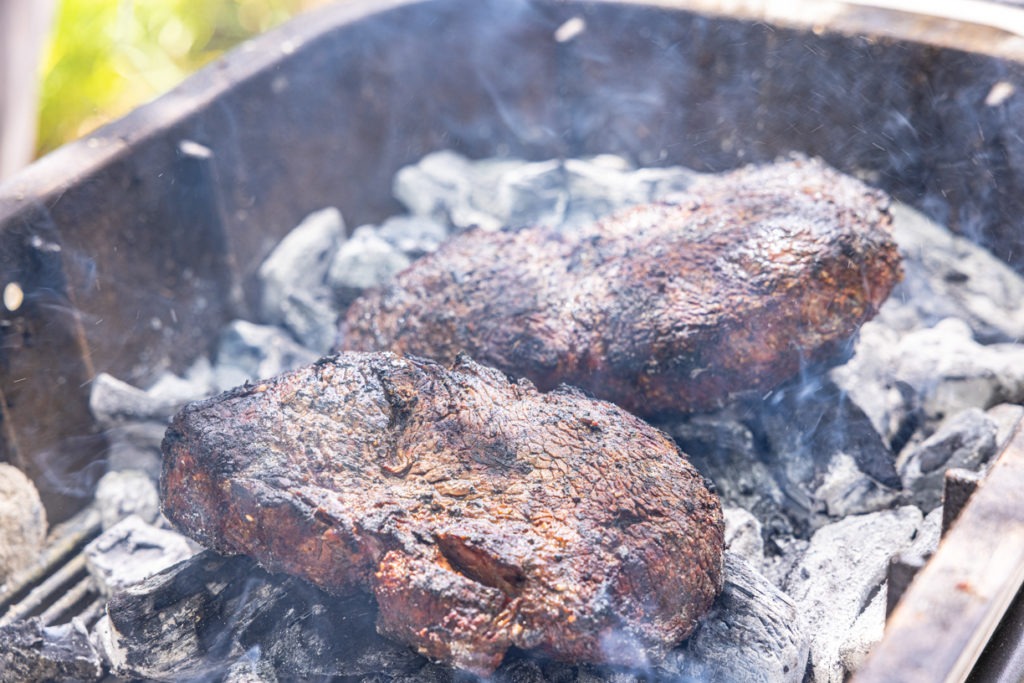
Some recipes you will find for this method avoid seasoning the steak with anything but salt, but we prefer to cook caveman steak as the cavemen of ancient India may have: with lots of pepper. People tend to avoid seasoning the steaks because they fear the seasonings might burn. We didn’t find this to be a problem. Yes, some of the peppercorns burned, but that happens with any steak au poivre. And flavorful ash is literally all the rage in the fanciest of restaurants these days. If it offends your sensibilities, brush it off with that pastry brush we talked about. But it’s tasty.
Temperature for steak cooked on the coals
Carryover cooking is all about gradients. If the outside millimeters of your steak are only 10° above the center, then there isn’t as much heat exchange that will happen after cooking as when the outside is 75° hotter than the center. Given equal thicknesses and starting temperatures, a steak cooked in a hotter environment will experience more carryover cooking than one cooked in a cooler environment.
Well, when the exterior of your steak is sitting in a bed of 1200°F (649°C) coals, there is a lot of thermal energy being pumped into that exterior. The internal temperature gradients can be steep in steak cooked this way, so you’ll need to plan for a lot more carryover than you would with a steak cooked in an oven or on a grill. Plan for up to 15°F (8°C) of carryover at the thermal center, rather than the standard 5°F (3°C). This means for medium rare, you’ll want to pull your steak at a temperature as low as 115°F (46°C) to finish at 130°F (54°C )—or pull at 120°F (49°C) to finish at 135°F (57°C) for medium doneness. And pay attention. This cooking method is fast. It will only take a total of 3-5 minutes per side on a thick steak, but we find the doneness is more even if we flip the steaks about every 60–90 seconds during the cook. It takes a couple flips for the sear to set, but it does eventually. Six to ten flips and the steak is usually ready.
The coals will be very hot, so the speed of your Thermapen ONE is very much appreciated in this situation, where keeping your hand above the coals for extended periods can be painful! Of course, you could use tongs to hold the steak while you temp it, which we did, but even then the heat is intense and the speed of the Thermapen ONE is still appreciated.
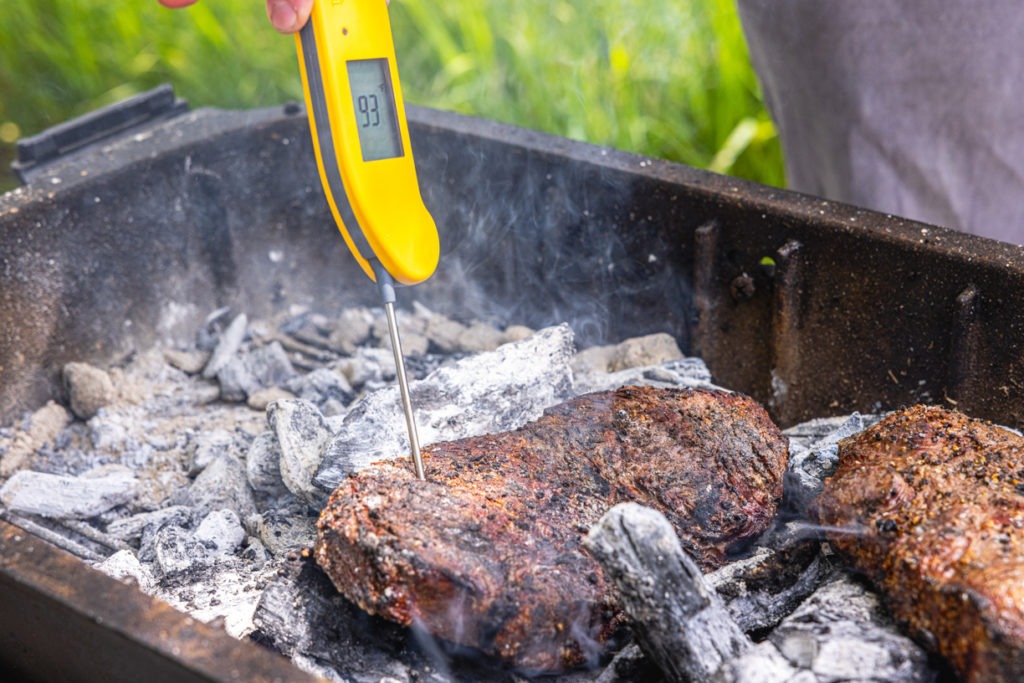
Why cook a fire steak?
Would we cook my steak this way every day? Probably not. But would we do this for a gathering, a cookout party? Absolutely. It’s a great way to get a lot of food cooked very quickly, with excellent, charbroiled results that are savory and delicious. Plus it’s a cool party trick. “Hey, Phil, how are we cooking the steaks?” “Like this!” *throws meat into the firepit.*
Actually, on second thought, we might cook them this way quite a bit. Going primal like this eliminates all the finicky coal heaping and water-bath positioning of most grilling. It’s coals and meat. It’s simple, and if you use a Thermapen ONE, it’s still exact.
If you want to amp up the whole experience, throw some whole peppers that have been tossed with a little oil and salt into the coals. Turn them with tongs as they char, and remove them from heat when they are cooked all over. You can brush the charred skins off, or, if you use a thin-skinned variety like the shishito peppers pictured here, just eat them as is. Party win.
Like your most ancient of forebears, you can cook in the extremity of simplicity. Enjoy a rocket-fire sear with a minimum of cooking equipment. But use the Thermapen ONE advantage, and enjoy a tender, juicy cut that needs no gnawing!
Print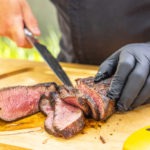
Caveman Steak Recipe
Description
Steaks cooked right on the coals. Read more at Grillgirl.com’s article on the caveman technique or at Bon Appétit’s article, featuring Steve Raichlen.
Ingredients
-
- 2 each, 1 ½”–2” thick steaks (we used sirloin, but you can use rib eye, porterhouse, or strip)
- 3 Tbsp whole black peppercorns
- Coarse kosher or sea salt
Also have some vegetable son hand to caveman-cook and eat with your steak. Peppers and broccoli are particularly good, as are carrots.
Instructions
- Start a fire of lump charcoal.
- When it is well lit, scatter it into a single layer.
- Season the steaks liberally with the salt and allow them to sit for a minute for the salt to hydrate and adhere.
- Crush the peppercorns with a grinder or the heel of a heavy-bottom pan.
- Liberally coat the steaks in pepper. Don’t worry, it won’t be too much.
- Fan the excess ash off your coals.
- Place the steaks on the coals! Exciting!
- After 60–90 seconds, as measured on your Timestick®, flip the steaks.
- Cook the steak on the second side for another 60–90 seconds. Continue cooking and flipping, every minute to minute and a half.
- Temp the steak with a Thermapen, aiming for 115°F (46°C) for medium-rare, or 120°F (49°C) for medium doneness.
- Allow the steaks to rest on a pan for 10 minutes. While they rest, grill up your vegetables (tossed previously with some oil and salt and pepper).
- Slice the steak and serve, or, you know, pick it up and eat it with your hands.
Shop now for products used in this post:


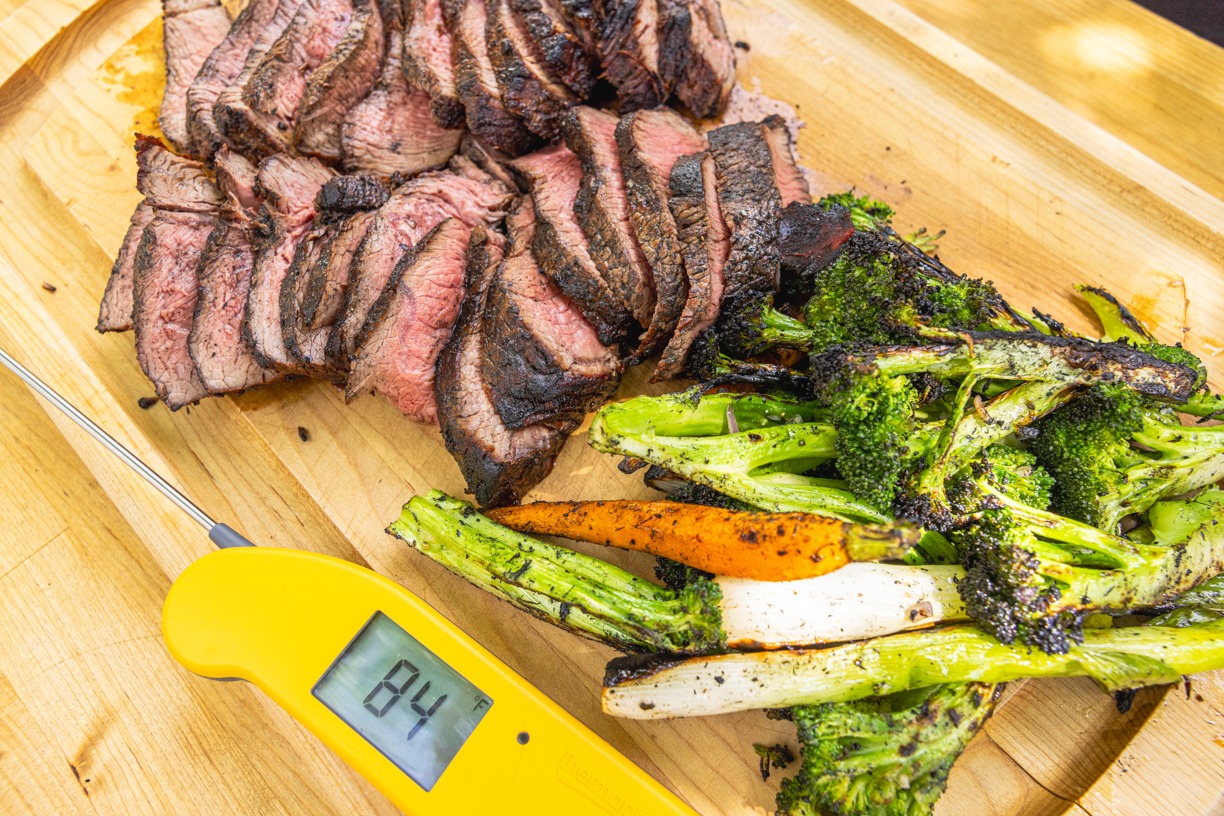
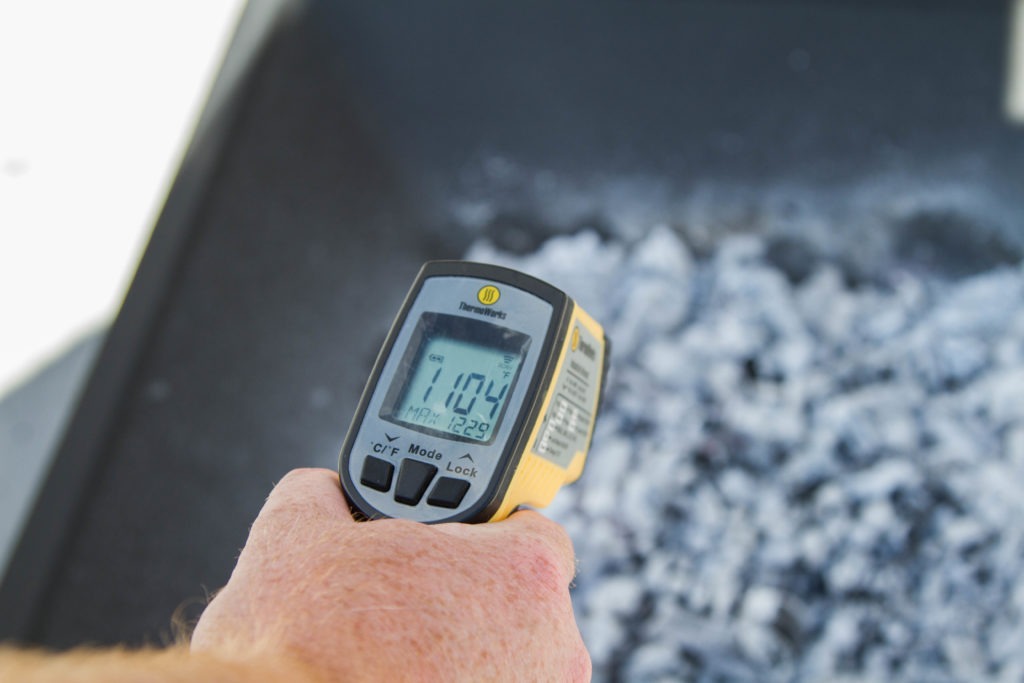
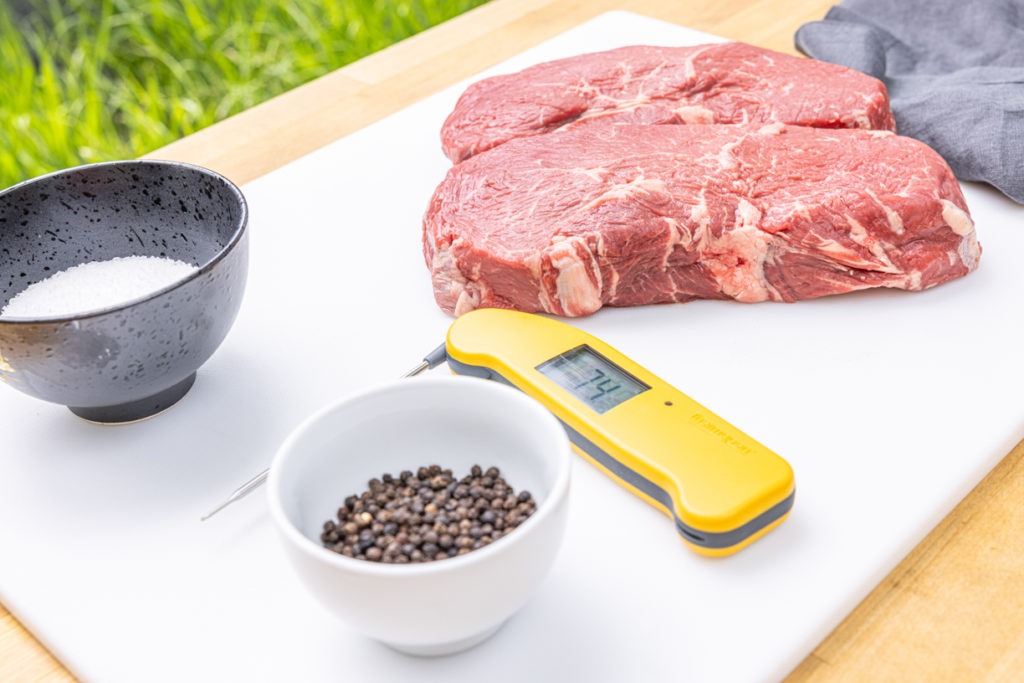
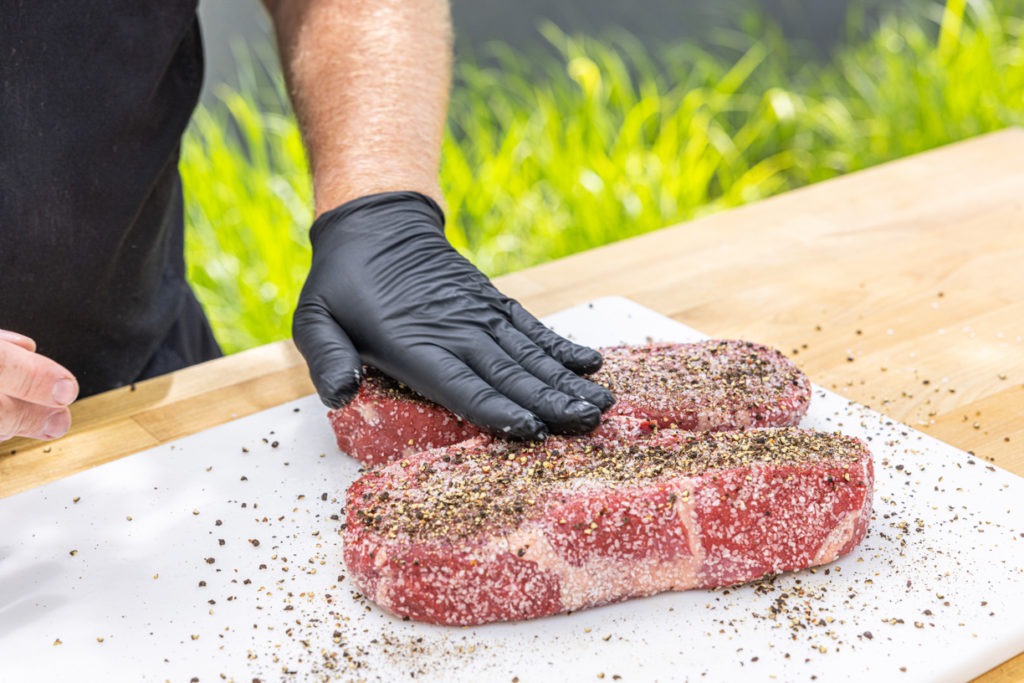
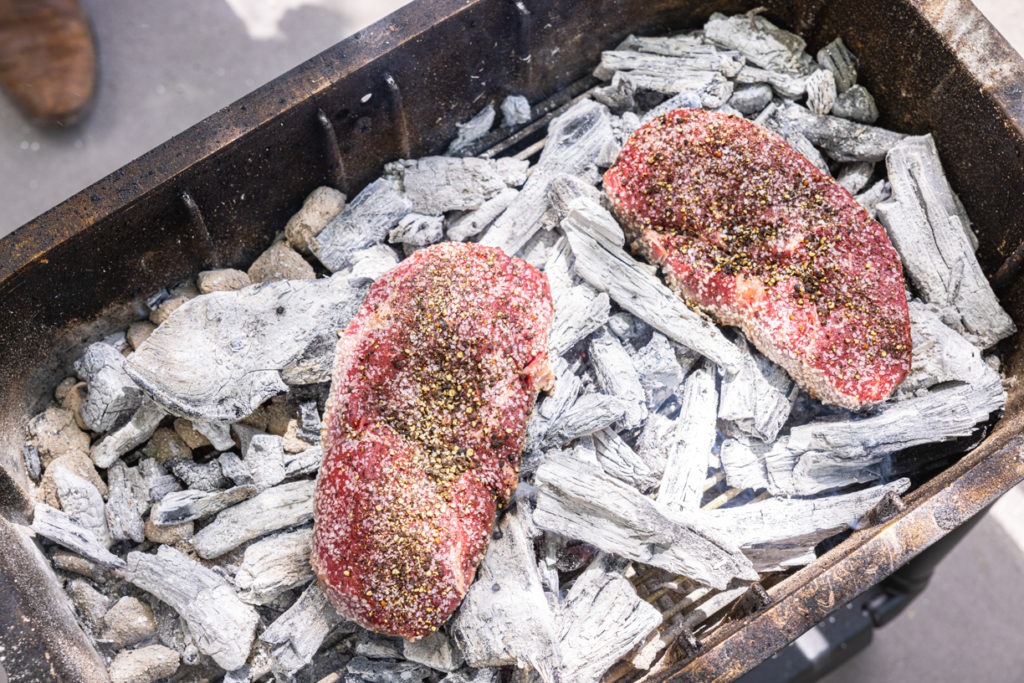
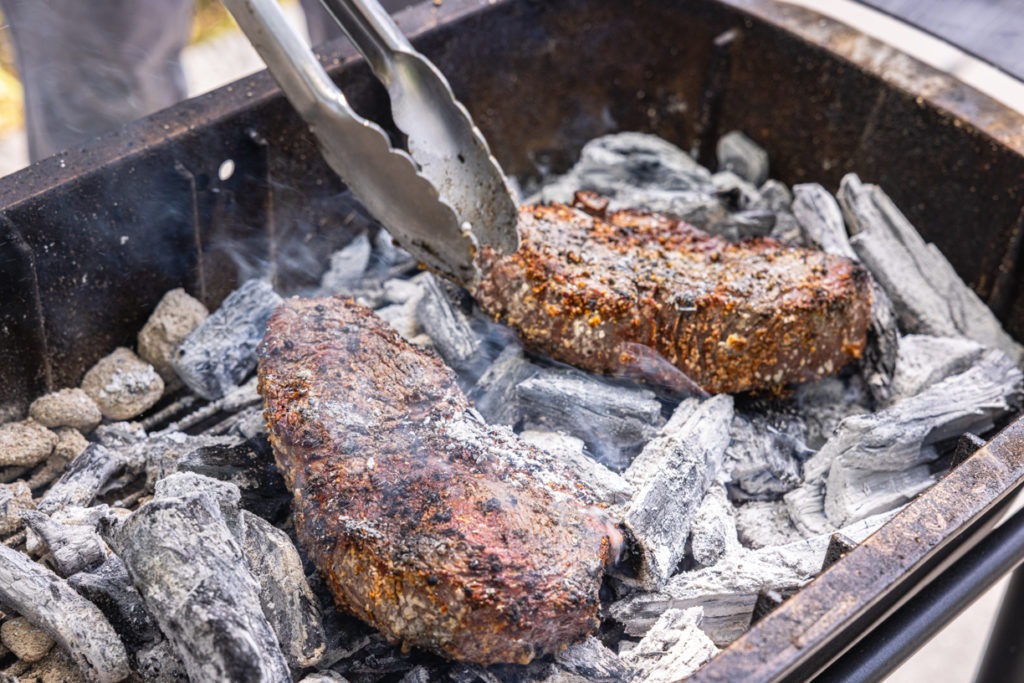
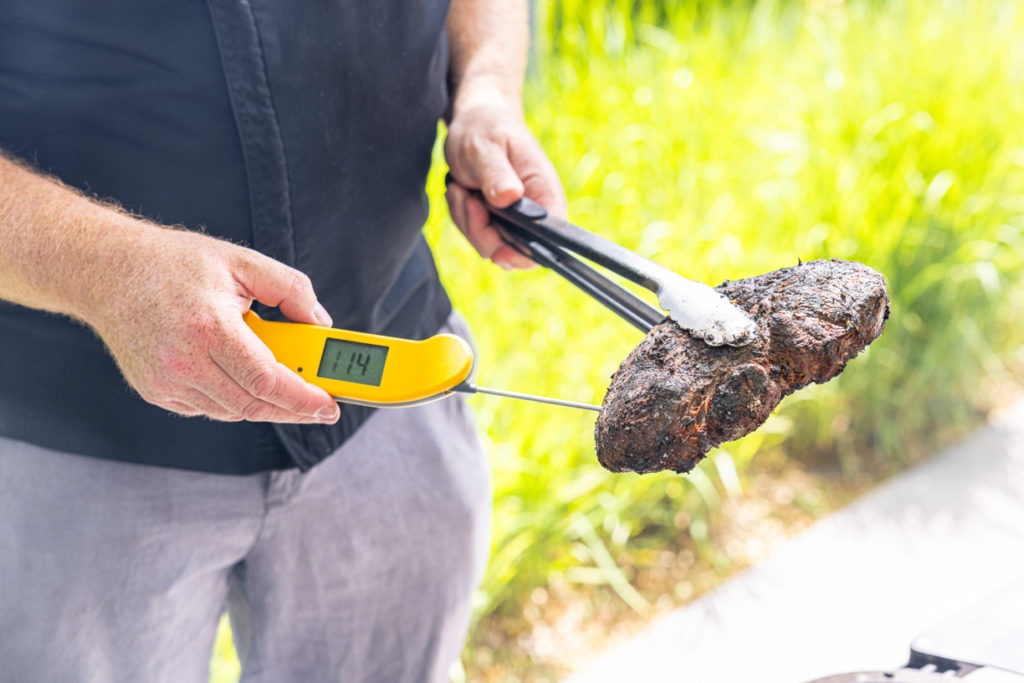
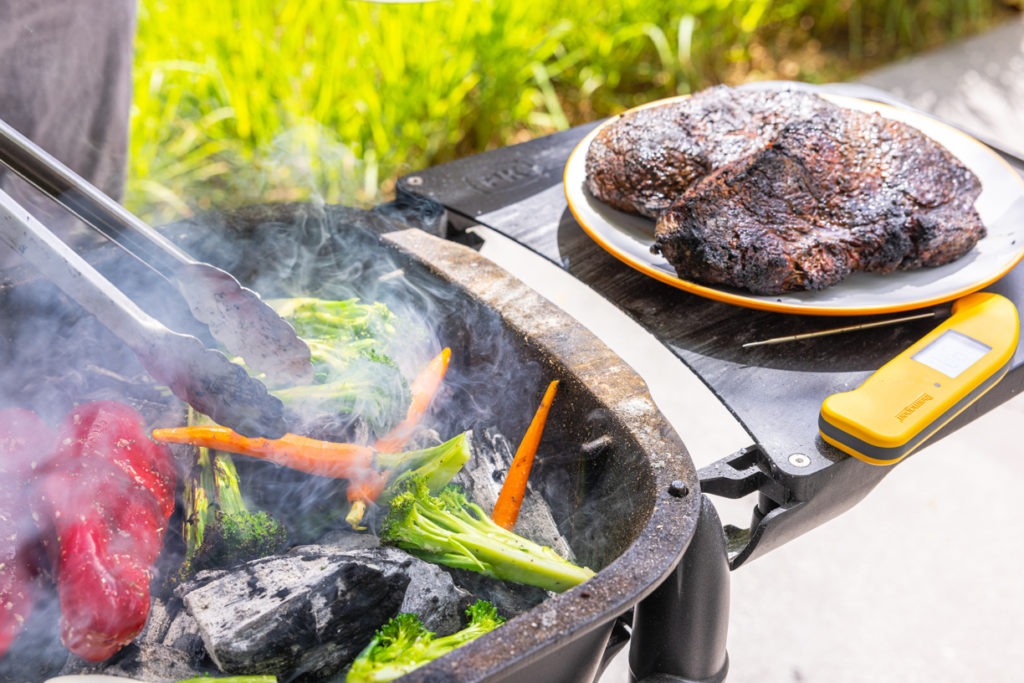
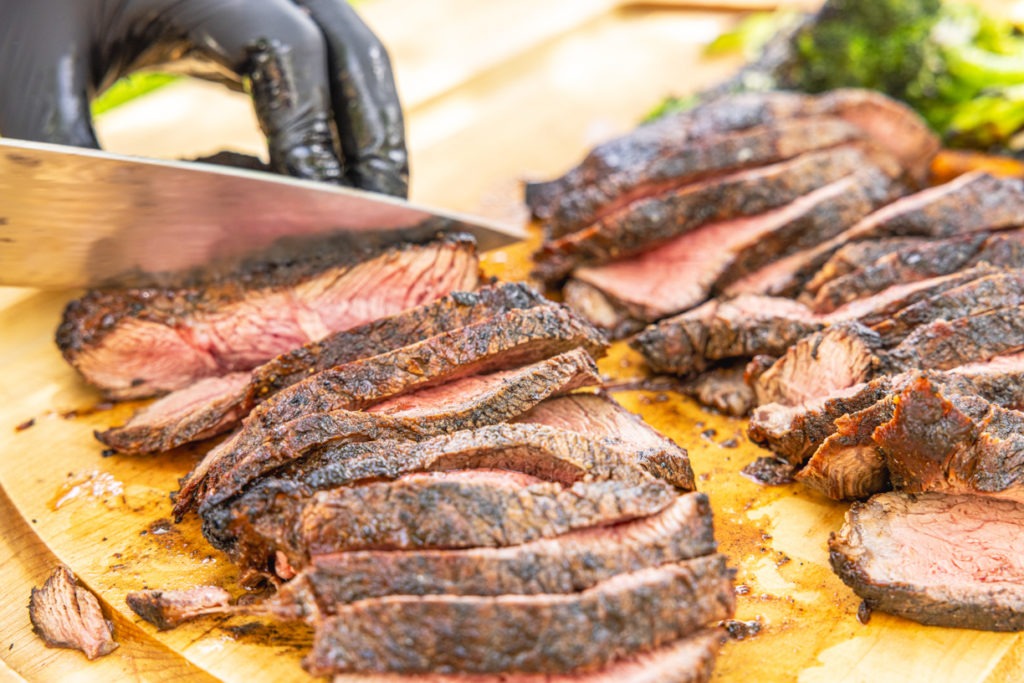

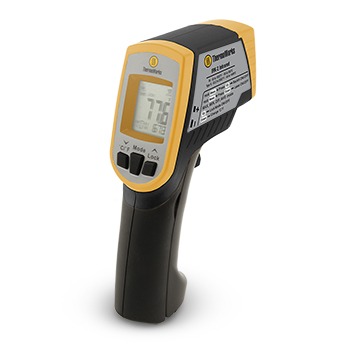
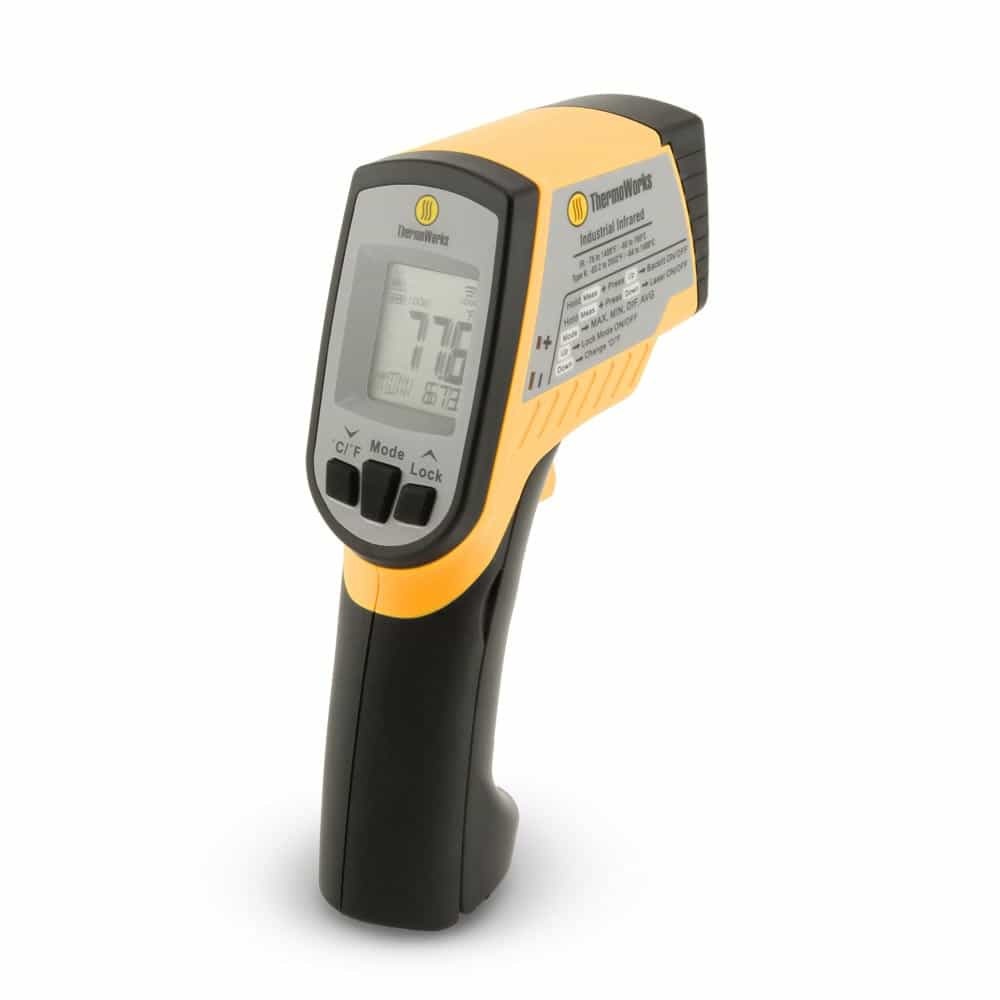

Awesome. Such techniques and creative use of food with accurate tools are the reason I love to receive my weekly email from ThermoWorks. I could not imagine cooking without my MK4. More and more of my family and friends are thanking me for choosing the MK4 as a special gift for their love of cooking. Though, I must admit, I like having the advantage of the IRK-2 infrared thermometer. Everyone wants to know how it works and is a great conversation starter. Consensus: the food is perfect and having the right tools makes grilling and BBQ even better.
Todd,
Thank you so much! We’re glad to help you and your friends enjoy your food more. Thanks for the kind words!
We do this in our wood stove, amazing flavor, lamb chops too and you can’t beat the clean up!
Erin,
Great, now I need to go buy myself some lamb chops! Fantastic idea, and you are right about the cleanup. Happy cooking!
I love steaks seared directly on charcoal but my wife turns her nose up at it.
So I got an 8″ round cast iron replacement grill and placed it directly on the coals. It works great and she’s happy so it’s a win-win.
I’m curious to hear from any of you who have tried this: does the pepper flavor actually make it through to the steak when cooked this way? Do you leave the burned pepper on for serving, or is is brushed off first? My instinct would have been to just salt it the meat, but I’d like to hear the comments of those who have used this method.
I don’t know if I count, having written the post, but I do find the pepper comes through. That isn’t to say that just salt won’t be good.
Uughh… arrghh, GOOD Aaawwww!
LOL
I’ve been doing this for years, but I like my meat on the rare side. Therefore, I make sure to let the steaks mellow outside of the fridge for at least half an hour before cooking. For 3″-thick steaks, I do 2 minutes on the first side, 2 minutes of the second side, followed by a scant half a minute on each side to finish. Get the meat off the coals to check the temp, and adjust if necessary. Do everything FAST… don’t waist time. The faster your thermometer registers, the more accurate your finished product will be. My new Thermapen ONE is PERFECTLY suited for this kind of cooking. Even the MK4 is a little too slow, as fast as it is. For the peppers, I use Hungarian wax variety for the thick walls. The outside skin will slip right off and leave char marks for flavor. I tried using large Spanish pimentons de Padron, but the walls are a littly too thin unless you can work really fast. They make this technique into a two-person job working from opposite sides of the grill.
Stu,
This is great! Thanks for the comment and the advice on the peppers!
How did primitive people store meat?
Thanks.
In their stomach. Or they dried it like jerky.
Wow that looks cool.What does ash taste like and is it safe?TIA
Tastes great, and as safe as any other charcoal-grilled steak.
I don’t know…just kind of dumb to me. The way my dad would cook steaks when I was a kid (1960’s-1970’s) would be over a screaming hot fie, on the grate but just a couple inches above coals. Does the same thing without all the hassle of fanning the ash off, getting stuck on coals off the steaks and so on.
It’s FUN, though! No, it’s not the greatest steak ever, but it’s a fun trick, and results in an excellent char. I’ll do it again, for sure.
Great article, but sorry, I have to call BS on the “lump charcoal is better” dogma. In your article you claim that lump “burns hotter” but you don’t even measure a briquette fire of equal size for comparison. I feel the lump vs. charcoal comments have been repeated so many times (often by vendors who stand to make money) that the BBQ community is now expected to accept it as Pure Truth. I’d love to see an A/B test where neither the servers nor tasters know how the steak was prepared. I expect that lump charcoal might actually have some advantages (possibly less ash, or a longer burn) but I suspect there’s far less difference than commonly believed. Maybe that’s a topic for your next article!
Fair point about size comparison.
Have you ever tried plopping the steaks on the coals then covering the top side with hot coals too to cook from both sides simultaneously?
No, but it could be interesting to try! One advantage of one-sided cooking is taht the other side can cool off a little. But it’s worth a shot.